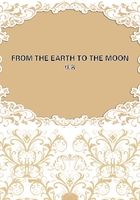
第101章
"Very well," continued Michel Ardan, "the Scientific Commission assembled in the projectile of the Gun Club, after having founded their argument on facts recently observed, decide unanimously upon the question of the habitability of the moon--`_No!_ the moon is not habitable.'"
This decision was consigned by President Barbicane to his notebook, where the process of the sitting of the 6th of December may be seen.
"Now," said Nicholl, "let us attack the second question, an indispensable complement of the first. I ask the honorable commission, if the moon is not habitable, has she ever been inhabited, Citizen Barbicane?""My friends," replied Barbicane, "I did not undertake this journey in order to form an opinion on the past habitability of our satellite; but I will add that our personal observations only confirm me in this opinion. I believe, indeed I affirm, that the moon has been inhabited by a human race organized like our own; that she has produced animals anatomically formed like the terrestrial animals: but I add that these races, human and animal, have had their day, and are now forever extinct!""Then," asked Michel, "the moon must be older than the earth?""No!" said Barbicane decidedly, "but a world which has grown old quicker, and whose formation and deformation have been more rapid.
Relatively, the organizing force of matter has been much more violent in the interior of the moon than in the interior of the terrestrial globe. The actual state of this cracked, twisted, and burst disc abundantly proves this. The moon and the earth were nothing but gaseous masses originally. These gases have passed into a liquid state under different influences, and the solid masses have been formed later. But most certainly our sphere was still gaseous or liquid, when the moon was solidified by cooling, and had become habitable.""I believe it," said Nicholl.
"Then," continued Barbicane, "an atmosphere surrounded it, the waters contained within this gaseous envelope could not evaporate.
Under the influence of air, water, light, solar heat, and central heat, vegetation took possession of the continents prepared to receive it, and certainly life showed itself about this period, for nature does not expend herself in vain; and a world so wonderfully formed for habitation must necessarily be inhabited.""But," said Nicholl, "many phenomena inherent in our satellite might cramp the expansion of the animal and vegetable kingdom.
For example, its days and nights of 354 hours?""At the terrestrial poles they last six months," said Michel.
"An argument of little value, since the poles are not inhabited.""Let us observe, my friends," continued Barbicane, "that if in the actual state of the moon its long nights and long days created differences of temperature insupportable to organization, it was not so at the historical period of time.
The atmosphere enveloped the disc with a fluid mantle; vapor deposited itself in the shape of clouds; this natural screen tempered the ardor of the solar rays, and retained the nocturnal radiation. Light, like heat, can diffuse itself in the air; hence an equality between the influences which no longer exists, now that atmosphere has almost entirely disappeared.
And now I am going to astonish you."
"Astonish us?" said Michel Ardan.
"I firmly believe that at the period when the moon was inhabited, the nights and days did not last 354 hours!""And why?" asked Nicholl quickly.